Facts About The Wild And Crazy Life Of Steve Martin
Throughout his long and respectable career, Steve Martin has proved himself as an actor, stand-up comedian, film and TV writer, and even as a banjo player. There doesn’t seem to be anything he can’t do, and he’s often made us laugh while doing it.
At the same time, there’s something mysterious about him. His work can be wacky and broad, or it can be sophisticated and high-concept, and people aren’t sure what they’re going to get. However, those mysteries become a little easier to solve once we get a better sense of the man behind the laughs.
He Had A Very Rough Home Life As A Child
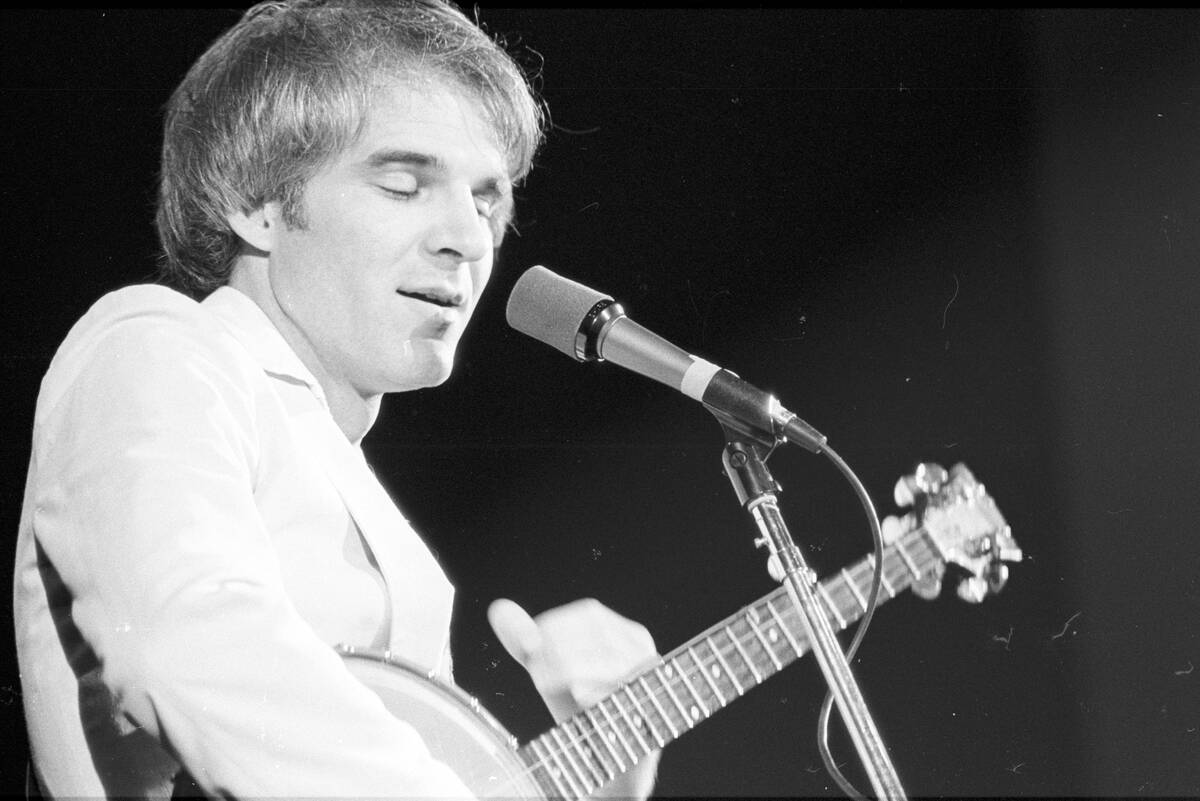
According to the AARP, Martin has said he had a happy childhood, but only the parts of it that took place outside his home. As his sister Melinda confirmed, this was because his father was often emotionally distant and cruel when he wasn’t.
In her words, “Steve kind of got the frustrating end from our dad. He would just blow his stack at him. I don’t remember hugs. I don’t remember affection.” For that reason, he looked for any activity or job that could keep him out of the house.
Martin Is Much Quieter Than He Seems In Real Life
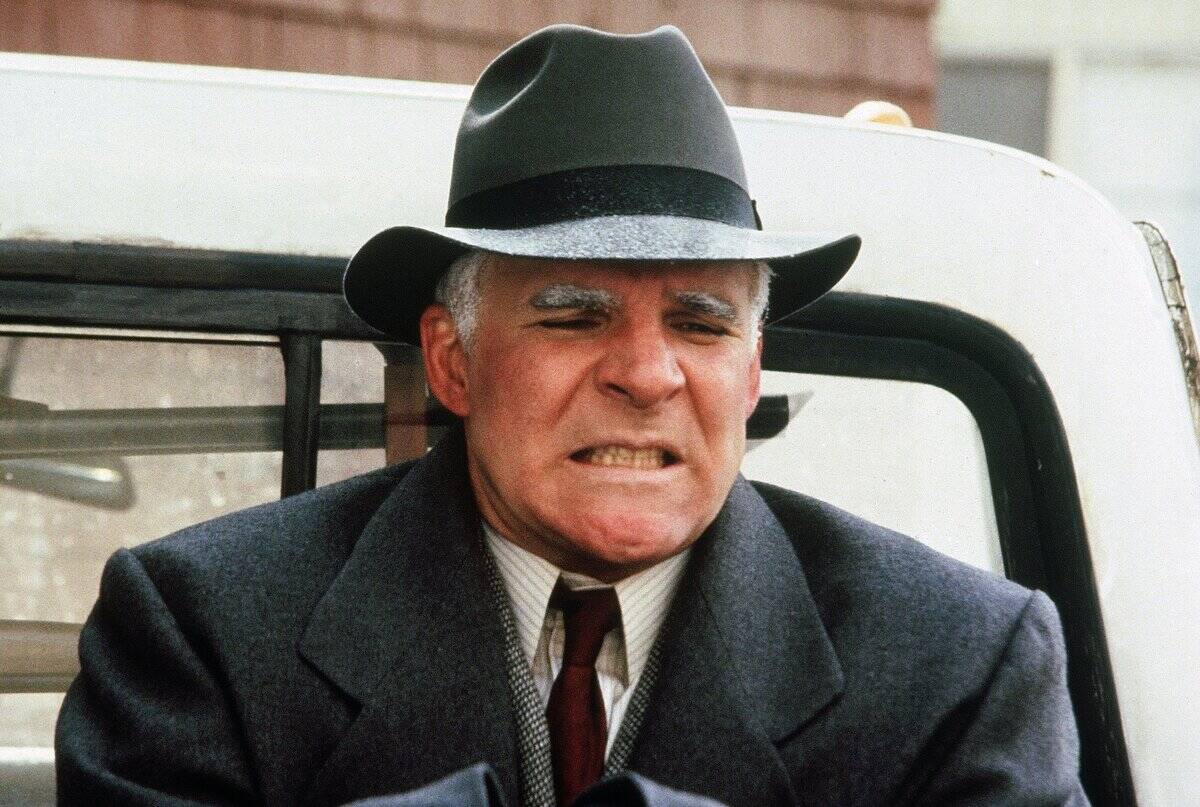
Whether it’s the evil charisma of Orin Scrivello, D.D.S., the wackiness of Jacques Clouseau, or the simmering rage of Neal Page, so many of Martin’s best-known roles have given the impression that he has a big, extroverted personality. However, that doesn’t match his real-life personality, and it never really has.
Speaking to Entertainment Weekly, Mason Williams said that even when he was just starting out on The Smothers Brothers Comedy Hour, Martin was a very quiet and shy person. That said, Martin told The Los Angeles Times in 2024 that this was partially due to the expectation to perform off the clock, and he’s more fun to be around nowadays.
He Is An Avid Art Collector
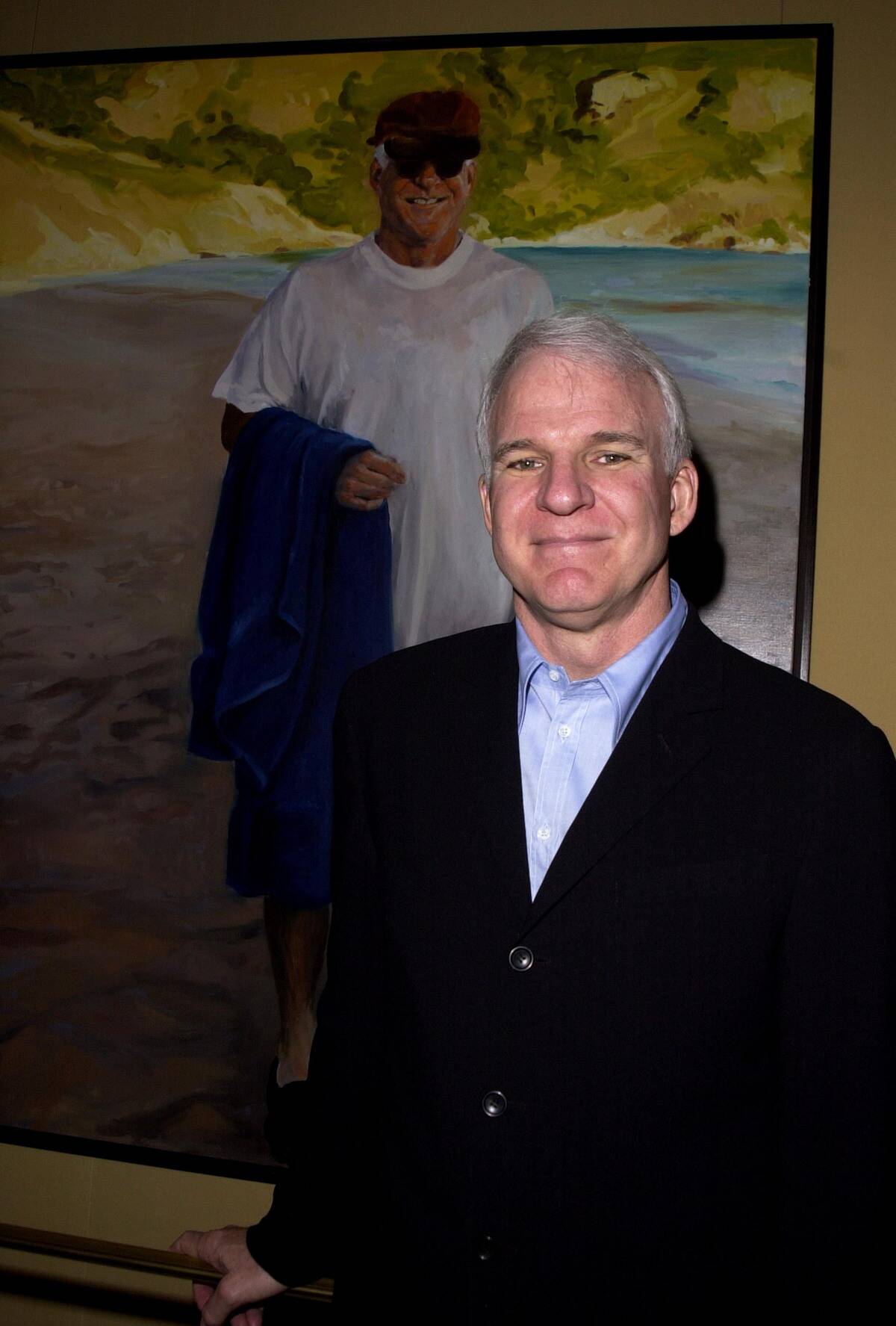
According to Artnet, Martin has been collecting art since he was 21, with his first piece being a James Gale Tyler painting from the 19th Century. Although it’s unclear exactly how many paintings he has, the total is likely well into the hundreds, and his collection features work from all over the world.
As he told Time back in 1987, “Collecting art is my biggest hobby. Art is so different from what I do that it’s an
escape for me… It’s like, good grief, these things are so beautiful—how
did this happen?”
Martin Once Recorded A Song That Made Billboard’s Top 40
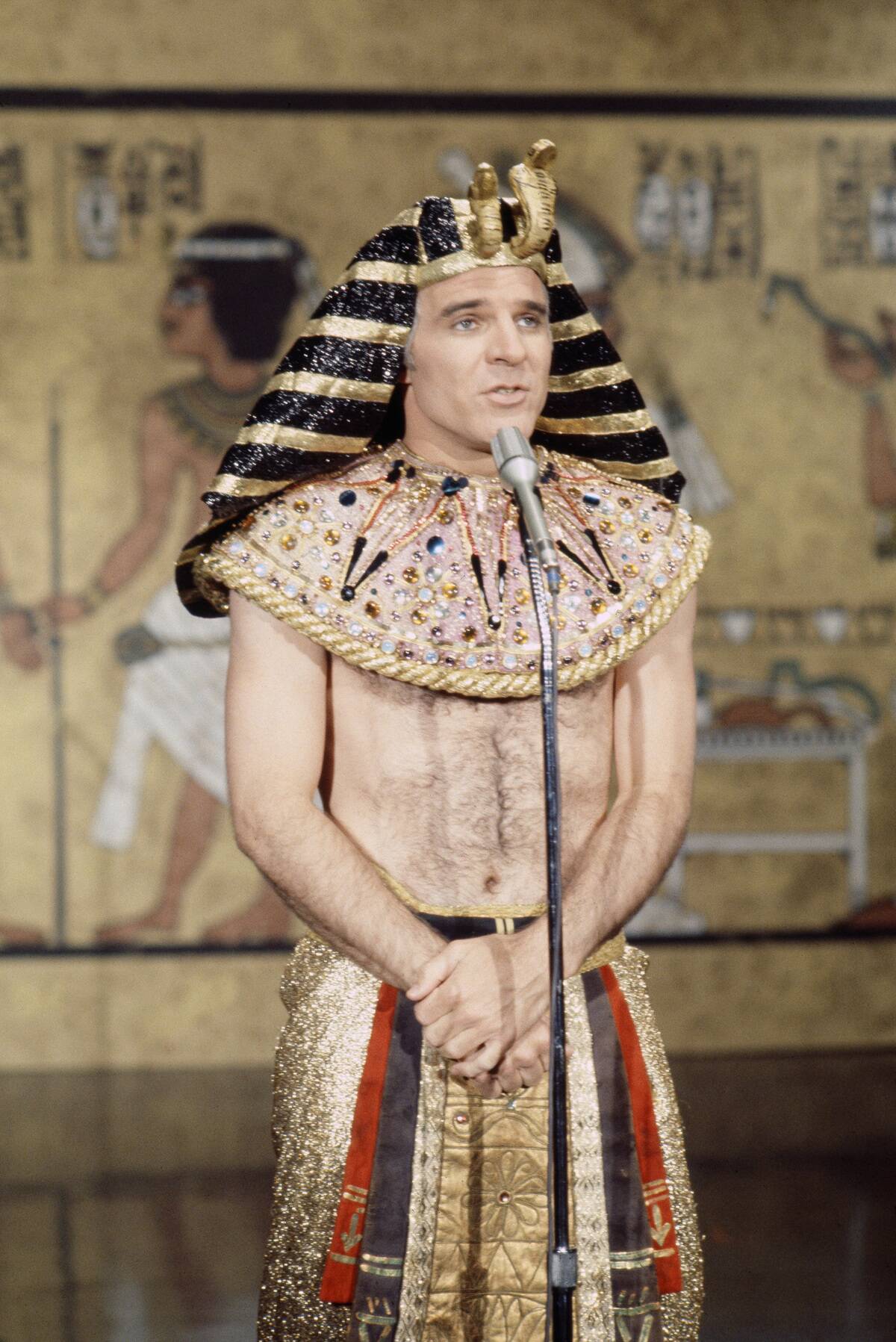
On April 22, 1978, Martin discussed the then-popular “Treasures of Tutankhamun” travelling exhibit during an appearance on Saturday Night Life, about which he said, “But I think it’s a national disgrace the way we have commercialized it with trinkets and toys, t-shirts and posters.”
Thus, he wrote a parody song that was even more flippant about the life of the Egyptian pharaoh called “King Tut,” which includes lines like “He was born in Arizona/Got a condo made of stone-a” and “Buried in his jammies.” While the success of the bit wasn’t surprising, it was likely far more unexpected for everyone involved that “King Tut” would reach number 17 on the Billboard Hot 100 that year.
A Childhood Job At Disneyland Gave Him His Iconic Props
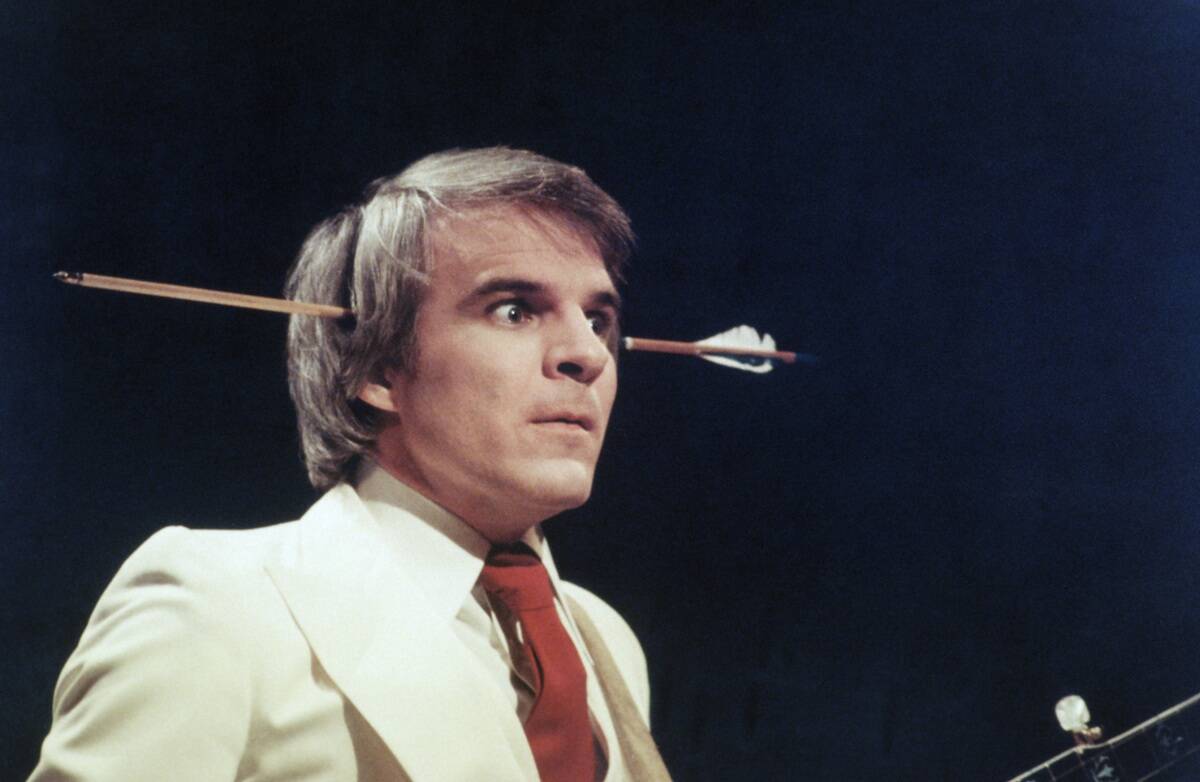
Back when he was still active in the stand-up scene, Martin was known for wearing headpieces like a pair of bunny ears or this gag headband that makes it look like an arrow is going through his head. However, it turns out that these props had been in his life since he was ten years old.
That was when he took a job at Disneyland, which saw him sell guidebooks for a quarter each while also learning magic tricks at Merlin’s Magic Shop in Fantasyland. According to the AARP, he also honed his future craft under stand-up comedian Wally Boag there. That magic shop was also where he sourced his since-iconic props.
Martin Appeared On The Dating Game Twice And Won
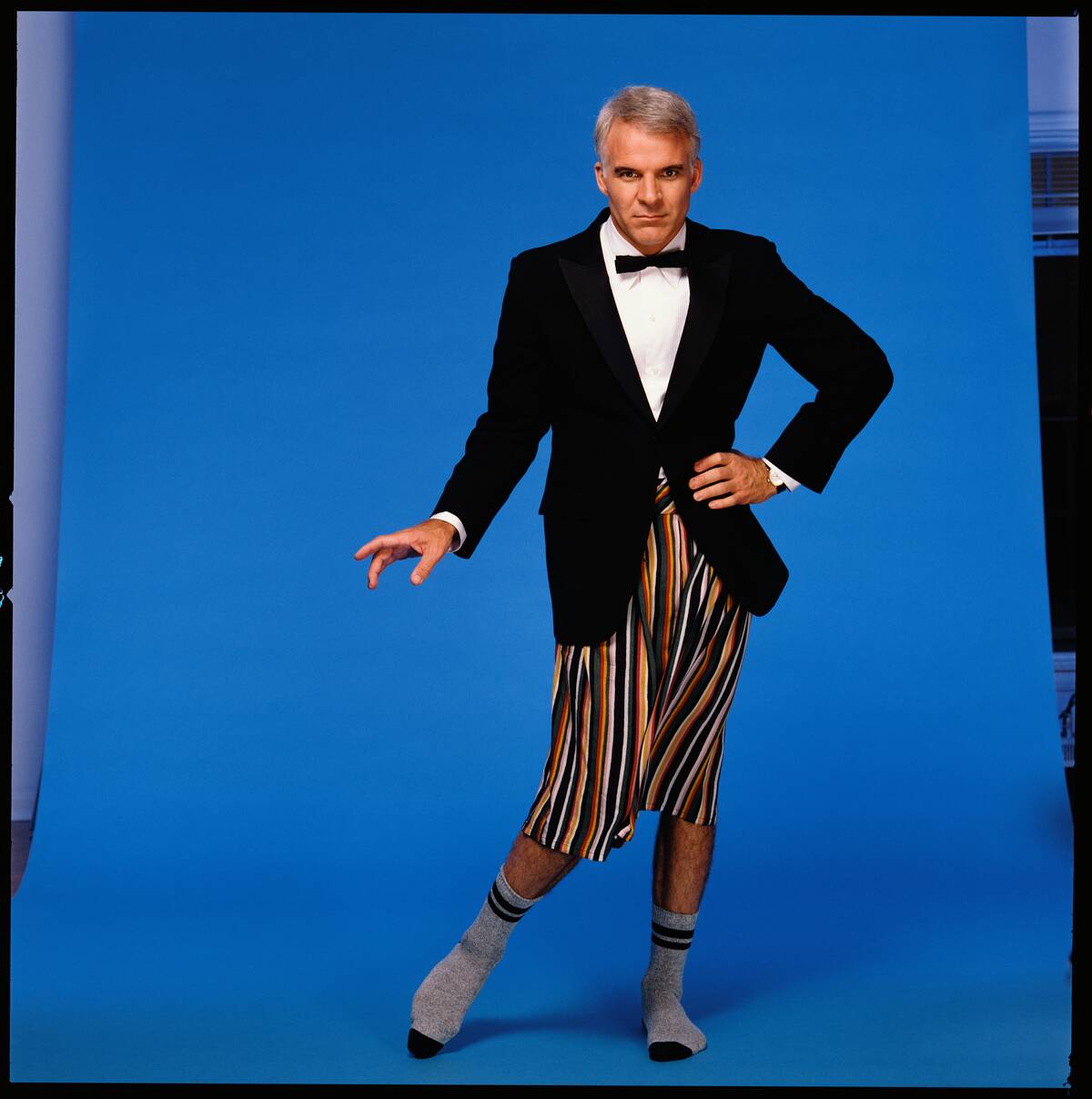
Back when he was still writing for the Smothers Brothers, Martin appeared on a 1968 episode of The Dating Game. According to the AV Club, he brought his comedic energy to the appearance, claiming to be nude behind the partition and saying he’d like to take bachelorette Deana Martin to a closed Goodwill store after hours and try on clothes all night.
She found this charming enough to choose him, winning the pair a trip to Italy. He would appear another time, but this one proved even easier for him because the bachelorette was the sister of a childhood friend. She knew he would be there ahead of time, so they cheated by arranging questions ahead of time, which duped the show into sending them to Tijuana.
Martin Taught Himself How To Play The Banjo
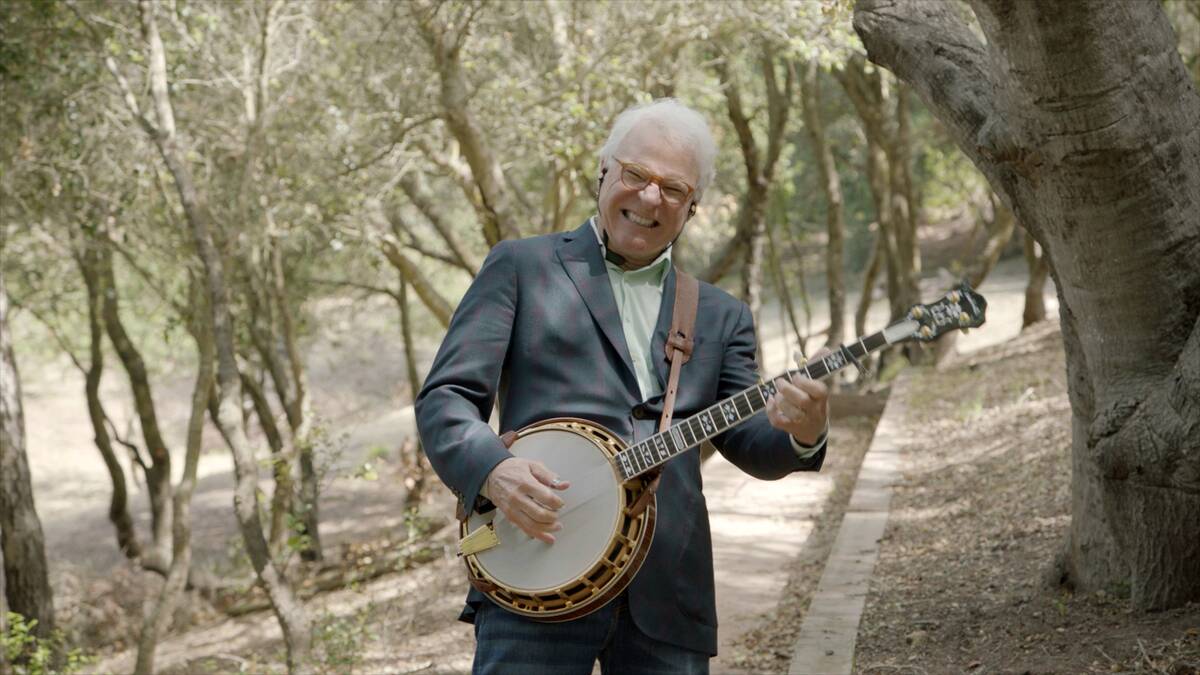
Although Martin’s skills on the banjo have been part of his act for decades, it’s not quite as well-known that those skills were honed solely by him. As he told NPR, an early fondness for folk music compelled him to pick up the instrument when he was 17.
He threw himself into his study, learning multiple styles along the way. As he told it, “I can’t tell you if it was hard because I didn’t have anything to compare it with. I got some books — Earl Scruggs’ book on
how to play the banjo, I got Pete Seeger’s book. Another
technique, once you got some fundamentals down, was to take 33 rpm
records and slow them down to 16 and tune the banjo down — so it would
be in the same tune — and pick it out note by note.”
Martin Had An Oscar Nomination Before He Was Famous
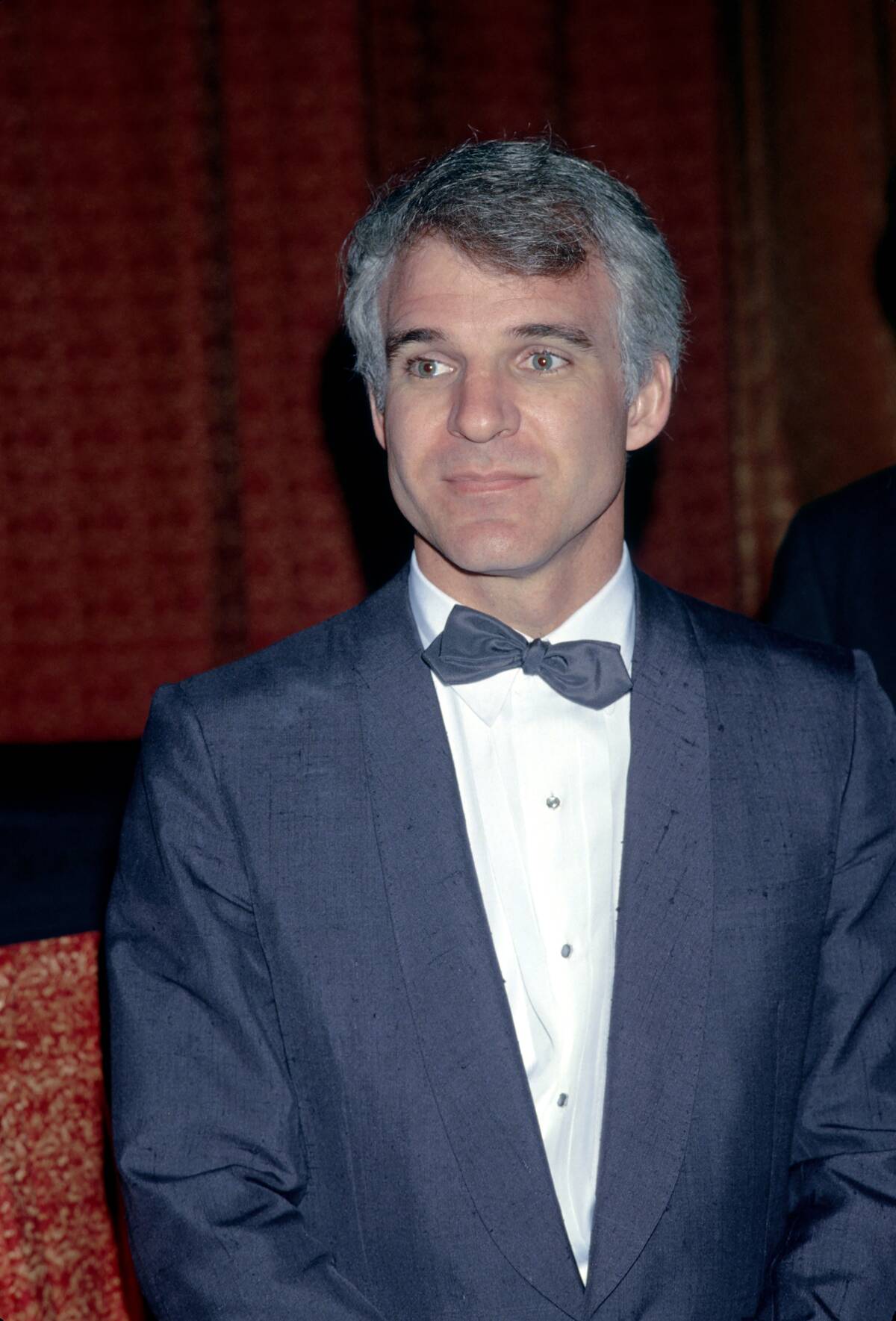
By the time he wrote and starred in the short film, The Absent-Minded Waiter, Martin’s up-and-coming status as a comedian was just about to cross over, and he’d have his first comedy album, Let’s Get Small, out within a year. In addition to bringing customers hilariously wrong concoctions like “lard omelettes,” his character also zones out before charmingly saying, “Sorry, just went to the Bahamas for a moment.”
As it turns out, the short was funny and entertaining enough to be nominated for an Academy Award for Best Live Action Short Film in 1978. Although he didn’t win, the reality is that the short’s producer, William E. McEuen, would be more likely to accept the award if he had.
Martin Was A Cheerleader In School
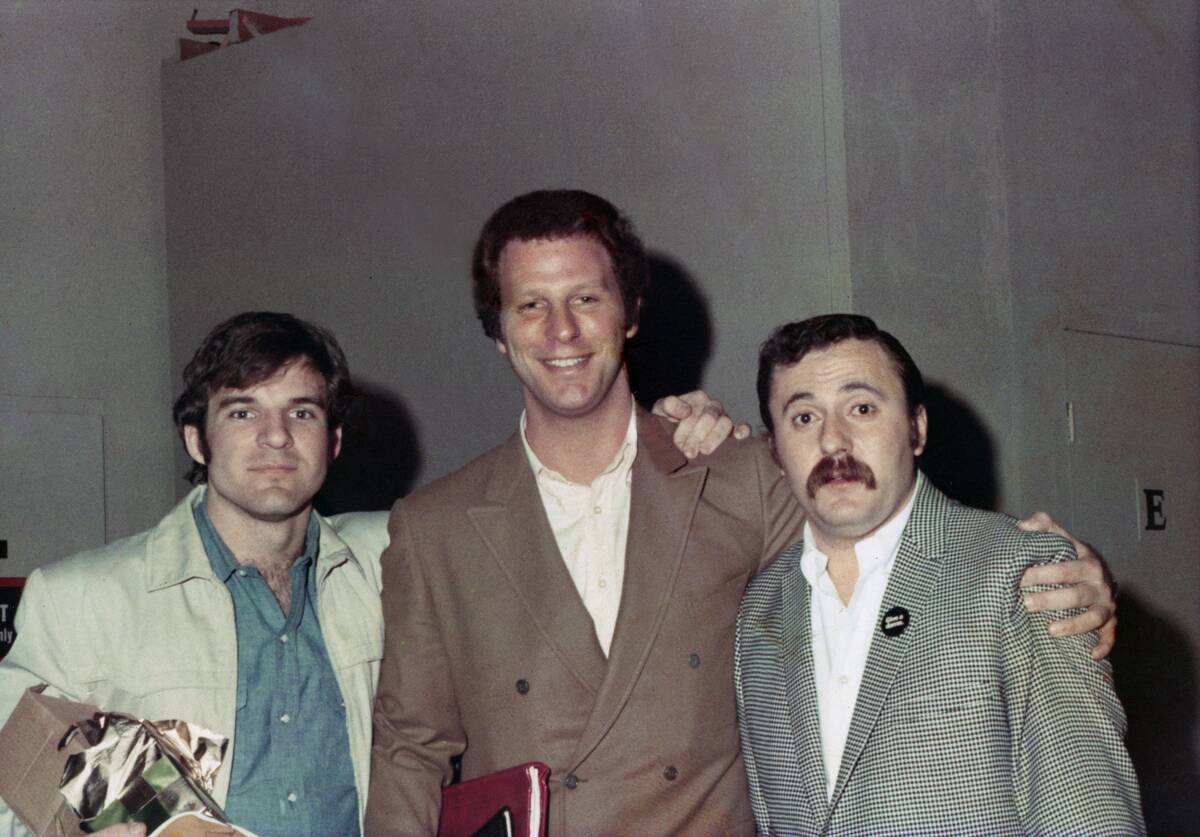
Martin grew up in Waco, Texas, but he went to high school in Garden Grove, California. There, he became a pioneering male cheerleader, and as we might expect, he put his impishly clever spin on the experience.
According to Mental Floss, he described himself as a “yellleader” in his yearbook, as that apparently seemed more accurate to his experience. He also tried to make up cheers like, “Die, you gravy-sucking pigs,” but left the officials at his school less than amused.
Martin’s Success Came Improbably After A Hopeless Time
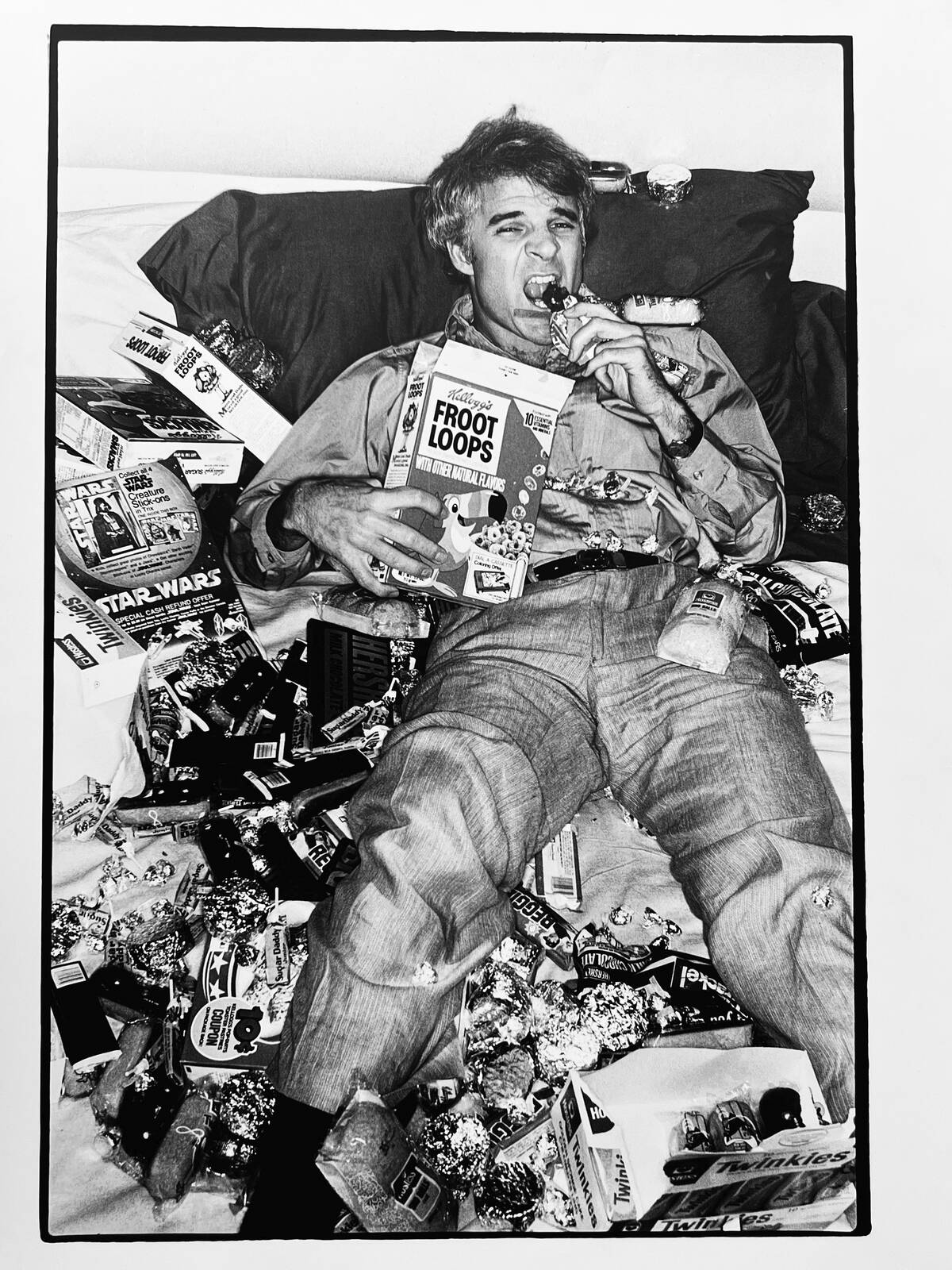
After Martin landed his gig with the Smothers Brothers and appeared on Sonny and Cher’s show, he decided to quit the show to focus on his stage act. Unfortunately, if he thought that his TV work would make the audiences larger, he learned that this was not the case.
According to the AARP, they actually shrunk and he found himself taking odd gigs like a drive-in theater where people honked and instead of applauded. He said he would give himself until the age of 30 to hit it big or quit. To even his surprise, fame suddenly found him to such an extent that his whole audience once followed him out of the theatre and let themselves be ordered into a pool while he swam over them.
Martin Borrowed A Joke That Ended Up Making His Career
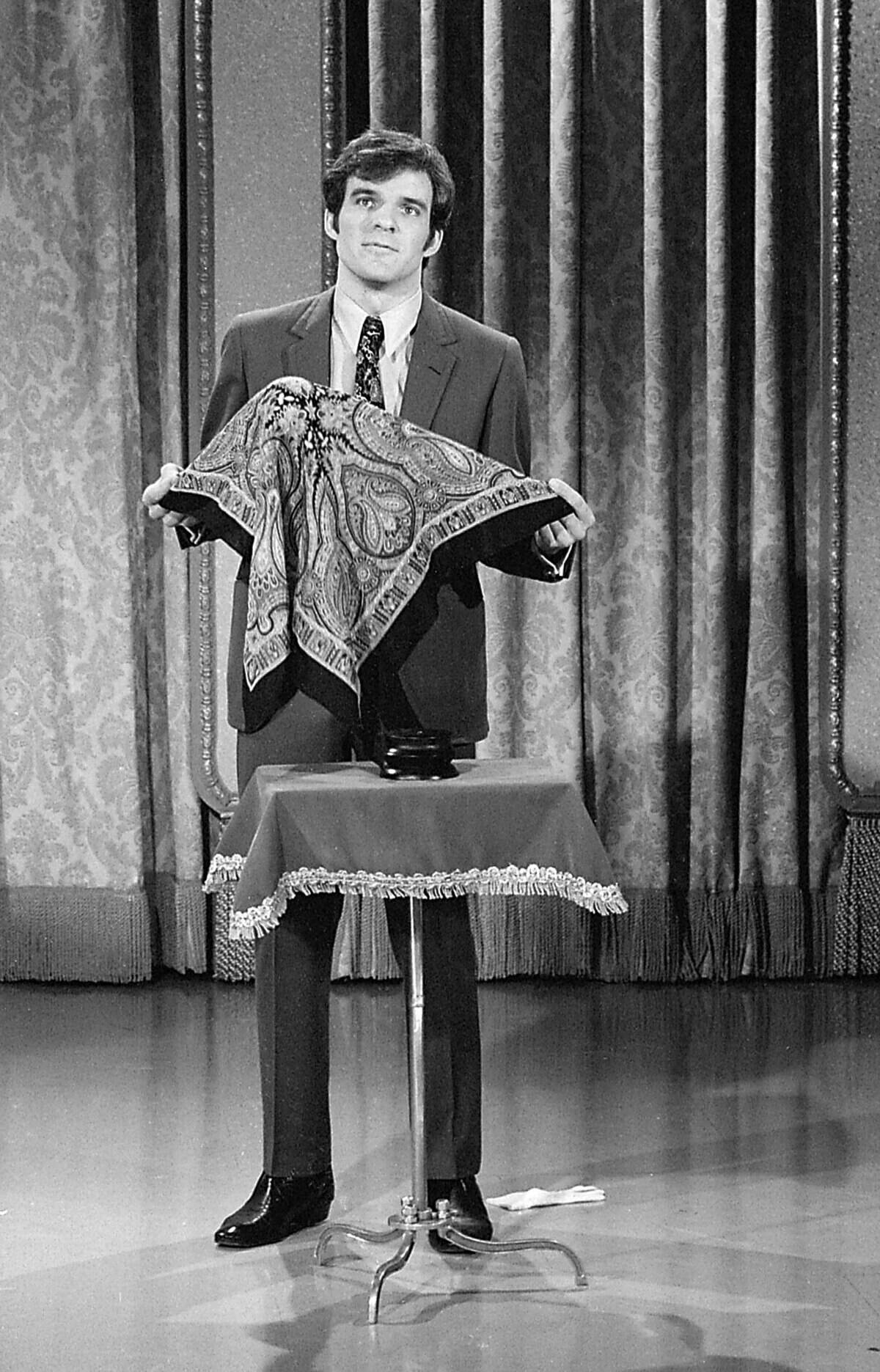
Although the comedy world is understandably hostile to joke theft, the word “borrowed” is accurate here because Martin had permission from his roommate and fellow comedian, Gary Mule Deer, to use one important joke. As he told The Hollywood Reporter, one of his first tasks for the Smothers Brothers was to give Tom Smothers an opening joke.
He knew this was a make-or-break request, but he was in a panic because he was unable to think of anything. However, he remembered Mule Deer saying, “It has been shown that more people watch TV than any other appliance,” and after Smothers liked it, Martin found he could relax enough to write his own material.
Martin’s Father Remained Unsupportive After The Fame
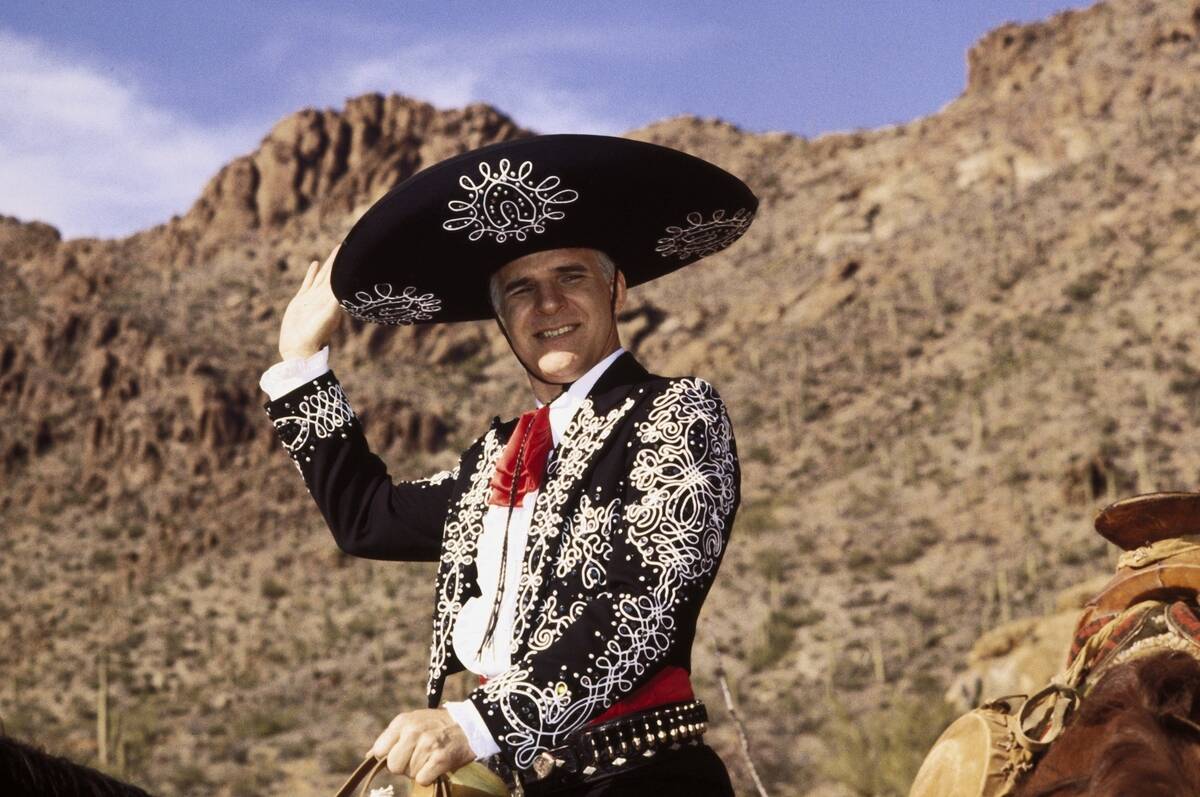
While some parents have a way of either recognizing their faults or pretending they were always supportive when the children they mistreat become famous, one of the only positive things to be said about Martin’s father is that he wasn’t a phony. No matter his son’s level of fame, he wasn’t impressed.
While serving as the president of the Newport Beach Association of Realtors, the elder Martin wrote in his company’s newsletter, “His performance did nothing to further his career. I think Saturday Night Live is the most horrible thing on television.” Even years later, all he could muster was, “Well, he’s no Charlie Chaplin.”
Martin’s Rise Came From A Smart, Lucky Fear Response
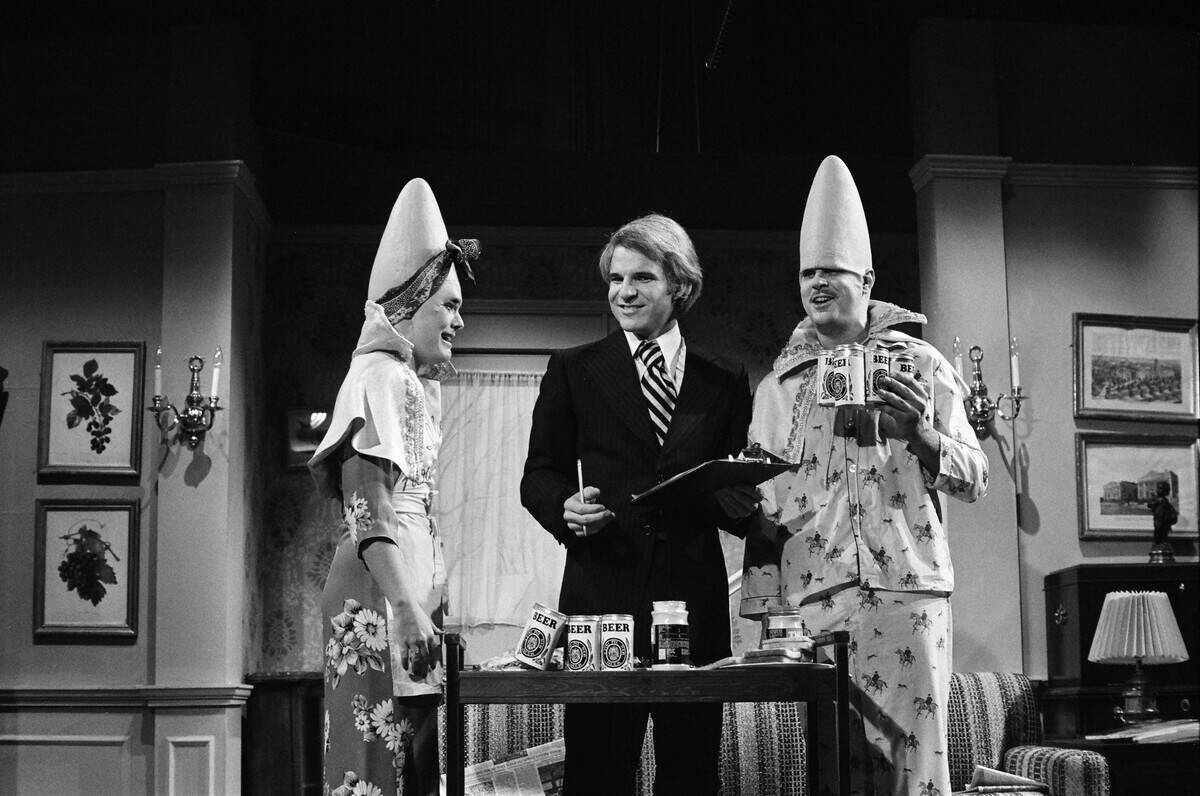
Considering how tough it was for Martin’s unconventional comic stylings to catch on at first, it took him by surprise to see a TV show come out of nowhere with a similar vibe. As the AARP described it, he was actually terrified by the rise of Saturday Night Live, particularly the idea of competing with it.
However, his response to this anxiety seemed to be an “if you can’t beat them, join them” attitude and once Lorne Michaels and the other showrunners determined he fit their format well, he started a long period of guest hosting the show. This made both himself and the show more famous in the process and the partnership went smoothly enough that he’s guest hosted 16 time thus far.
Martin’s Satirical Coffee Order In L.A. Story Haunts Baristas
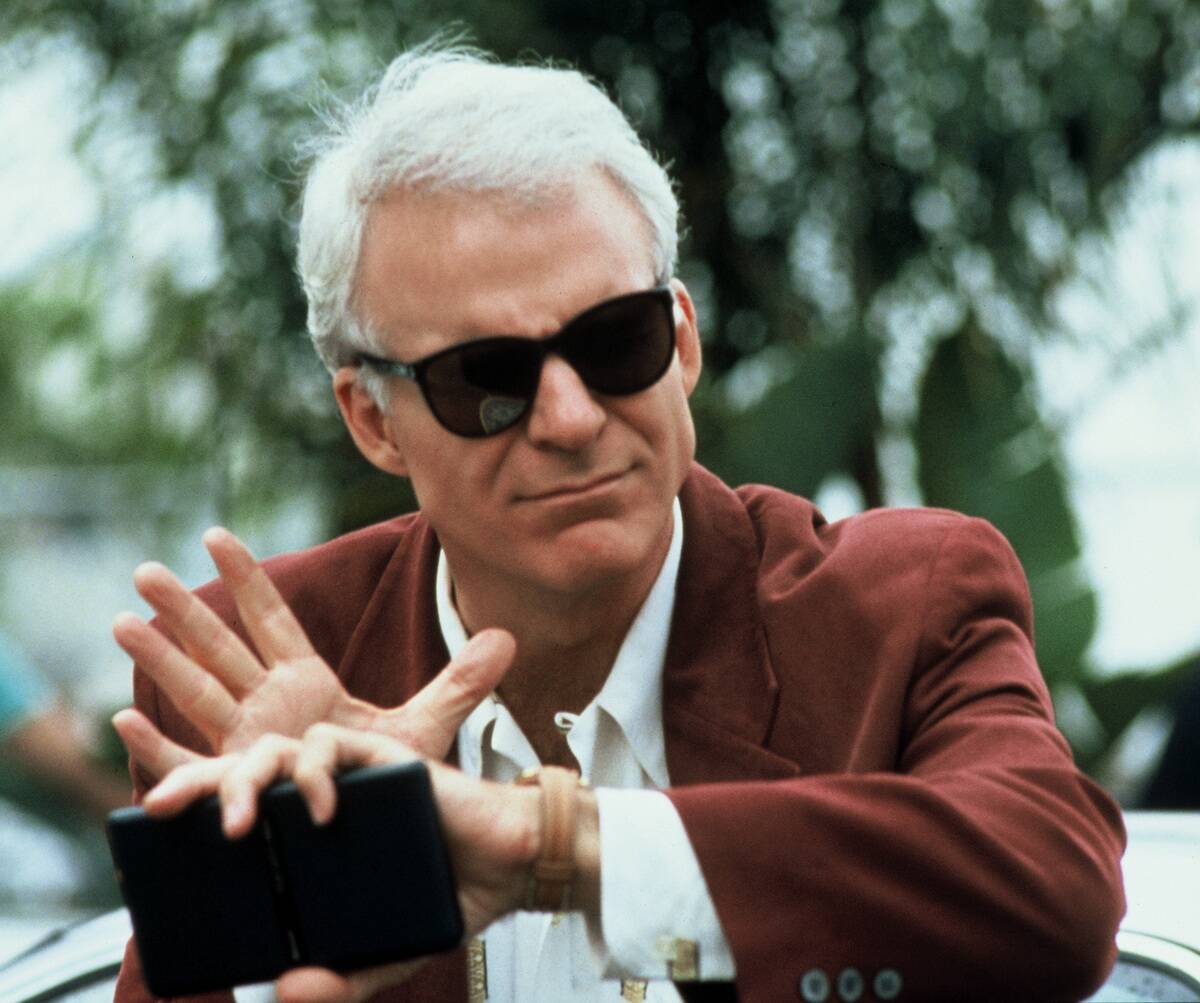
The movie L.A. Story features Martin’s character rhyming off an array of overly fussy coffee orders that would only become truer to life in the decades since. After milling over requests like a “double decaf cappuccino” and “decaffeinated coffee ice cream,” he lands on “I’ll have a double decaf, half caf, with a twist of lemon.”
According to Entertainment Weekly, some customers in Los Angeles didn’t see the satire in Martin’s order and spent the next year terrorizing baristas with similarly confusing orders like “I’ll have a half caf doublé de cap. No, make that a single caf cap reg cap.”
Martin Popularized The Use Of “Air Quotes”

When people are sarcastically quoting others, it’s common for them to bend their fingers next to their heads as little quotation marks. Those wondering how that practice started will have to keep wondering, but Martin’s tendency to do it during his Saturday Night Live Appearances are credited for its widespread use.
David Frum was quoted by The Washington Post as writing, “Martin taught a whole generation of young people the distant, cool, ironic sensibility summed up by the gesture he popularized — the four-fingered drawing of double-quote marks in the air.”



